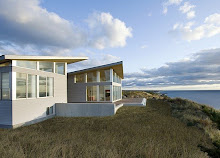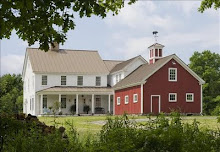I am an interior designer with a passion for healthy building practices. I created this site as a resource for anyone seeking to build or furnish their home in ways that are healthier for people and the planet, all while encouraging beautiful design along the way.
Our recent showcase project, The Concord Green Healthy Home, is a model of building healthy, sustainably, and in harmony with nature. It is the culmination of years of research, and collaboration with healthy building experts. Having traveled up this rather steep learning curve has allowed me to offer healthy design services to clients, so that they too may achieve these goals without having to do all of the research themselves. I now work with clients remotely too, so that I can reach more people with designs that inspire and contribute to a better world.
If you would like help creating your own healthier, more comfortable or simply more beautiful living environment, please contact me at lisa@ktharpdesign.com.
Our recent showcase project, The Concord Green Healthy Home, is a model of building healthy, sustainably, and in harmony with nature. It is the culmination of years of research, and collaboration with healthy building experts. Having traveled up this rather steep learning curve has allowed me to offer healthy design services to clients, so that they too may achieve these goals without having to do all of the research themselves. I now work with clients remotely too, so that I can reach more people with designs that inspire and contribute to a better world.
If you would like help creating your own healthier, more comfortable or simply more beautiful living environment, please contact me at lisa@ktharpdesign.com.
My Design Philosophy:
Balance form with function.
Infuse light.
Respect and enhance natural surroundings.
Use materials that are honest and non-toxic.
Barefoot simplicity = casual elegance.
Reclaim, reuse, repurpose.
Variety is the spice... from new traditionalism to uber-modern.
Find the joy.
More detail on best building practices... Healthy + Green + Classic Design:
Healthy
Like many others, I too have experienced the negative health impacts of “modern” unhealthy construction practices, after spending two years in a corporate “sick air building”. Back during the energy crisis of the 1970’s, the building had been sealed tight to preserve heat. Unfortunately, this “ziplock bag” environment also contained a toxic soup of black mold, cleaning chemicals, printing ink particulates, and off-gassing formaldehyde –-- all kept constantly airborne for easy inhalation by the miracle of forced air heating and cooling.
Unfortunately, this dangerous situation repeats itself in our homes, schools and workplaces every day. The EPA tells us that the indoor air of a typical home is up to 5 times more polluted than outside air… from hidden mold and toxins lurking in paint, cabinetry glues and adhesives, floor finishes, carpeting, cleaning products, air fresheners… the list goes on. Worse yet, the off-gassing continues for months and even years after that “new paint or carpet” smell disappears.
Upon losing my youngest sister Jeannie to cancer in 2008, I committed myself to learning as much as possible about healthy living environments. My personal mission is to demonstrate that healthy, green buildings are not only possible -- they are an imperative for our own health, and the health of future generations. They can also be incredibly beautiful and timeless in design.
Green
By now, it is well known that our country’s housing industry contributes a huge percentage of waste to our landfills, and that our homes consume staggering volumes of non-renewable and polluting resources like fossil fuels. Luckily, there are now so many ways to drastically reduce these effects. They fall into three main categories:
Construction Practices – Stick-built construction is still the predominant mode of building in the US today. But other options can provide significant benefits. For example, panelized construction, in which materials are precision-cut and partially assembled in a factory before arriving at the site, saves significant waste, makes for easy recycling of scraps and protects building components from the elements, thereby avoiding the potential development of hidden rot and mold. Manufactured, pre-fab or kit homes now all represent quality building options, even for high end custom homes.
Specifications – Never has there been a time when such a breadth of healthy and green building products has been offered. Non-toxic paints, sealants, glues and finishes abound. Reclaimed wood, brick and stone, salvaged doors and hardware, vintage sinks, tubs and tile are not only easy to find, they add the beautiful patina of age to a new construction or remodeling project. Energy Star appliances, recycled materials and FSC-certified forestry products are now on the shelves of most local retailers. Finally, responsible “green” finishes are just as easy to select as any other in creating your beautiful home.
Classical / Traditional
The traditional building principles of our ancestors still hold deep value today. Homes were built “green” long ago, quite simply because early settlers had no choice but to work with nature. There was no thermostat to instantly adjust a room’s temperature, no overnight shipping of exotic hardwoods from a tropical locale, and certainly no burning of fossil fuels to light up the night.
We can learn so much from studying our world’s regional architecture, custom designed for each unique climate. New England’s iconic Saltbox hunkered down its low shoulder to the cold North winds, while opening up its tall windows to the sunny warmth of a southern exposure. The thick adobe walls of New Mexico, or the deep shady porches of Louisiana, for example, serve entirely different climates.
Local building materials, the latest green trend for reducing transportation costs and preventing resource depletion around the globe, were the only option in centuries past. In New England, that meant plentiful stone and wood and brick… materials that have stood the test of time for hundreds of years.
Finally, the aesthetics of historical architecture remain prized even today. As preservationists know all too well, the greenest form of home building is maintaining and caring for the homes that are already built. If your home is built in a classic style that is always in demand, it will virtually guarantee that it will be well cared for, into the next century and beyond.
Healthy
Like many others, I too have experienced the negative health impacts of “modern” unhealthy construction practices, after spending two years in a corporate “sick air building”. Back during the energy crisis of the 1970’s, the building had been sealed tight to preserve heat. Unfortunately, this “ziplock bag” environment also contained a toxic soup of black mold, cleaning chemicals, printing ink particulates, and off-gassing formaldehyde –-- all kept constantly airborne for easy inhalation by the miracle of forced air heating and cooling.
Unfortunately, this dangerous situation repeats itself in our homes, schools and workplaces every day. The EPA tells us that the indoor air of a typical home is up to 5 times more polluted than outside air… from hidden mold and toxins lurking in paint, cabinetry glues and adhesives, floor finishes, carpeting, cleaning products, air fresheners… the list goes on. Worse yet, the off-gassing continues for months and even years after that “new paint or carpet” smell disappears.
Upon losing my youngest sister Jeannie to cancer in 2008, I committed myself to learning as much as possible about healthy living environments. My personal mission is to demonstrate that healthy, green buildings are not only possible -- they are an imperative for our own health, and the health of future generations. They can also be incredibly beautiful and timeless in design.
Green
By now, it is well known that our country’s housing industry contributes a huge percentage of waste to our landfills, and that our homes consume staggering volumes of non-renewable and polluting resources like fossil fuels. Luckily, there are now so many ways to drastically reduce these effects. They fall into three main categories:
Design – It takes the same amount of time to build a poorly designed house, with no regard for Nature, as a house that works with Nature. Yet the differences are significant. Orienting the home with careful regard for the sun garners free warmth in the winter, and opens up opportunities for passive and active solar heating systems. Meanwhile, preserving deciduous trees that leaf out and provide shade in the summer can dramatically reduce cooling loads. Careful window placement provides free “day-lighting”, so that you can keep the lights off until the sun goes down. Super-insulating walls and roofs can drastically reduce energy consumption, so long as the design includes reliable fresh air ventilation. Installing radiant heat instead of forced hot air prevents contaminants, allergens and dust from becoming easily airborne and inhaled.
Construction Practices – Stick-built construction is still the predominant mode of building in the US today. But other options can provide significant benefits. For example, panelized construction, in which materials are precision-cut and partially assembled in a factory before arriving at the site, saves significant waste, makes for easy recycling of scraps and protects building components from the elements, thereby avoiding the potential development of hidden rot and mold. Manufactured, pre-fab or kit homes now all represent quality building options, even for high end custom homes.
Specifications – Never has there been a time when such a breadth of healthy and green building products has been offered. Non-toxic paints, sealants, glues and finishes abound. Reclaimed wood, brick and stone, salvaged doors and hardware, vintage sinks, tubs and tile are not only easy to find, they add the beautiful patina of age to a new construction or remodeling project. Energy Star appliances, recycled materials and FSC-certified forestry products are now on the shelves of most local retailers. Finally, responsible “green” finishes are just as easy to select as any other in creating your beautiful home.
Classical / Traditional
The traditional building principles of our ancestors still hold deep value today. Homes were built “green” long ago, quite simply because early settlers had no choice but to work with nature. There was no thermostat to instantly adjust a room’s temperature, no overnight shipping of exotic hardwoods from a tropical locale, and certainly no burning of fossil fuels to light up the night.
We can learn so much from studying our world’s regional architecture, custom designed for each unique climate. New England’s iconic Saltbox hunkered down its low shoulder to the cold North winds, while opening up its tall windows to the sunny warmth of a southern exposure. The thick adobe walls of New Mexico, or the deep shady porches of Louisiana, for example, serve entirely different climates.
Local building materials, the latest green trend for reducing transportation costs and preventing resource depletion around the globe, were the only option in centuries past. In New England, that meant plentiful stone and wood and brick… materials that have stood the test of time for hundreds of years.
Finally, the aesthetics of historical architecture remain prized even today. As preservationists know all too well, the greenest form of home building is maintaining and caring for the homes that are already built. If your home is built in a classic style that is always in demand, it will virtually guarantee that it will be well cared for, into the next century and beyond.


































